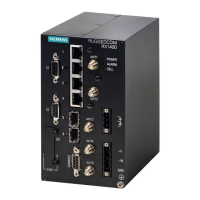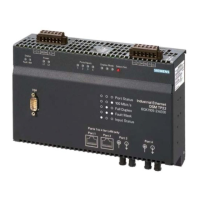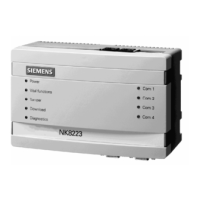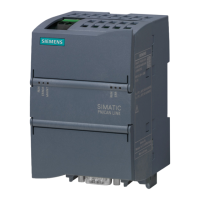RUGGEDCOM ROX II
CLI User Guide
Chapter 14
Network Redundancy
Managing Multiple Spanning Tree Instances Globally 645
Parameter Description
The cost to use in cost calculations, when the cost style parameter is set to STP in the
bridge RSTP parameters configuration. Setting the cost manually provides the ability
to preferentially select specific ports to carry traffic over others. Leave this field set to
'auto' to use the standard STP port costs as negotiated (four for 1Gbps, 19 for 100 Mbps
links and 100 for 10 Mbps links). For MSTP, this parameter applies to both external and
internal path cost.
rstp-cost { rstp-cost } Synopsis: { auto-cost } or a 32-bit unsigned integer between 0 and 2147483647
Default: auto-cost
The cost to use in cost calculations, when the cost style parameter is set to RSTP in the
bridge RSTP parameters configuration. Setting the cost manually provides the ability to
preferentially select specific ports to carry traffic over others. Leave this field set to 'auto'
to use the standard RSTP port costs as negotiated (20,000 for 1Gbps, 200,000 for 100
Mbps links and 2,000,000 for 10 Mbps links). For MSTP, this parameter applies to both
external and internal path costs.
4. If necessary, add Multiple Spanning Tree Instances (MSTI). For more information, refer to Section14.3.6.3,
“Adding a Multiple Spanning Tree Instance”.
5. Type commit and press Enter to save the changes, or type revert and press Enter to abort.
Section14.3.6
Managing Multiple Spanning Tree Instances Globally
MSTP (Multiple Spanning Tree Protocol), as defined by the IEEE 802.1 standard, maps multiple VLANs to a single
Spanning Tree instance, otherwise referred to as a Multiple Spanning Tree Instance (MSTI).
Each MSTI is assigned an MST ID and a bridge priority:
• The MST ID is used to associate the MSTI with a VLAN.
• The bridge priority is used by all devices in the Spanning Tree topology to determine which device among
them is elected the root device or backbone. An ideal root device is one that is central to the network and not
connected to end devices.
For more information about MSTP, refer to Section14.3.3, “MSTP Operation”.
CONTENTS
• Section14.3.6.1, “Viewing Statistics for Multiple Spanning Tree Instances”
• Section14.3.6.2, “Viewing a List of Multiple Spanning Tree Instances”
• Section14.3.6.3, “Adding a Multiple Spanning Tree Instance”
• Section14.3.6.4, “Deleting a Multiple Spanning Tree Instance”
Section14.3.6.1
Viewing Statistics for Multiple Spanning Tree Instances
To view statistics related to Multiple Spanning Tree Instances (MSTIs), type:
show switch spanning-tree msti-status
A table or list similar to the following example appears:
ruggedcom# show switch spanning-tree msti-status | tab
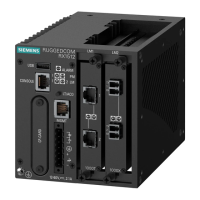
